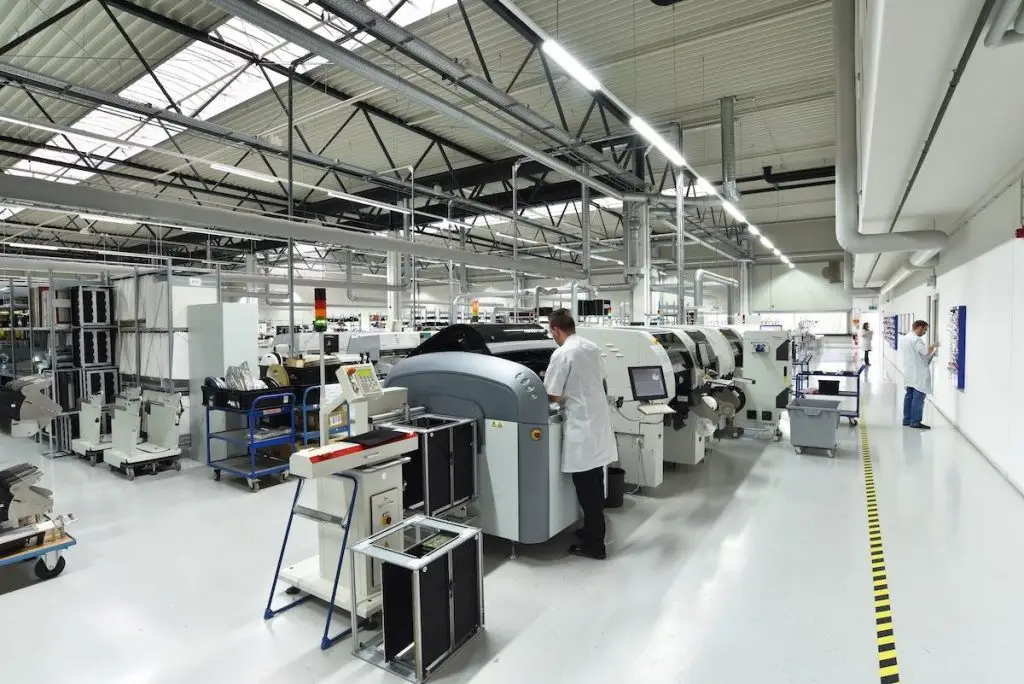In my previous post we covered what to consider for factory location. Having selected a location in which to set up a factory, the next question is how to lay it out.
Factory layout refers to the arrangement of physical facilities so as to have the quickest flow at the lowest cost and with the least amount of handling in processing from the receipt of material to the dispatch of the finished product. The aim is to allocate and arrange space and equipment to minimise operating costs.
As with location selection, factory layout is a long-term commitment. To optimise the relationship between output, floor area and manufacturing process, an efficient layout must achieve multiple objectives simultaneously:
- The proper and efficient use of the available floor space
- Work should proceed from one point to the next without delay
- Adequate production capacity and flexibility, including potential to expand, at least in the short- to medium term
- Lower material handling costs
- Employee health, safety, accident and injury prevention
- Efficient labour and equipment utilization and productivity
- Maintaining quality standards, managing waste and storing inventory
- Ease of supervision, and control
- Plant and equipment maintenance
- Complying with local regulations
Factory Layout Options
There is no one-size-fits-all option. Each factory, location and industry is unique, though the basic principles remain the same.
For small and medium manufacturing units, there are three main layout options, for which the main pros and cons are laid out below:
Product (Line) Layout
Equipment is arranged in a single line determined by the sequence of operations in this layout. Advantages are that it is low cost, operations are smooth and have continuity. The production control process is also simpler. However, the layout lacks flexibility. One process breakdown can bring the whole factory to a halt.
This layout is best suited for mass production where the process is repetitive, demand is stable and material availability is reliable.
Podrain expects to use this design for our larger ‘volume production’ factory.
Process Layout
Sub-process equipment and staff are grouped together in this layout. This is flexible and adapts fast to changes in volume and product variety. It’s also possible to ensure specialised supervision where needed and ensure high utilisation. However, more skilled labour is needed and production controls need to be strong to avoid time lags and inventory accumulation.
This layout is best suited for non-standard product lines, smaller quantities and where frequent changes to design may be needed. Podrain currently uses this layout in its prototype and small batch manufacturing facility.
Combined Layout
This blends the product layout and process layout where some steps of production are laid out by product line and others have sub process equipment and staff grouped together. this is a very complicated layout to design. When done right, it can offer efficiency and better production controls. However even a small error can lead to being stuck with bottlenecks in the production process. It’s typically used in very large manufacturing organisations for FMCG items.
Single-Storey vs. Multi-Storey Factory
Land is scarce, and suitable land is scarcer still. So, having selected a location and figured out the plant layout, one is left with the decision of a single-storey versus a multi-storey building.
Single-Storey Building -Advantages:
- Greater floor loads, no structural strength needed to support upper storeys
- Lower noise transmission and building vibration
- Ease and lower costs of building and expansion
- Natural light and ventilation
- Higher floor area usable for processing – no stairwells, lifts, shafts, etc.
- Concentration of service facilities centrally yields lower operating costs
- More efficient layout and material handling, product routing
- Lower cost of supervision
Multi-Storey Building – Advantages:
- More efficient utilization of land area, and smaller land area requirements
- Temperature management costs are significantly lower
- Greater structural strength, higher construction quality, fireproof and longer-lasting
- Upper storeys dust-free, especially for precision manufacturing operations
- Downward chutes are cost-effective for material movement
- Compact, more efficient layouts – though there is a limit to the benefit of this
Whether single- or multi-storey factories are more economical to build and operate per square foot of usable floor space is hard to determine. Local and regional considerations regarding regulations and land prices may play a significant role and costs may vary over the course of time. For example, our Bangalore factory is a multi-storey facility. While production control is a little more difficult, land availability at a central location in the city is a key factor in our choice.
In conclusion, siting, designing and building a plant that’s conducive to business success is all about balancing the trade-offs between costs, time, complexity and benefits in pursuit of the goals of the company.


